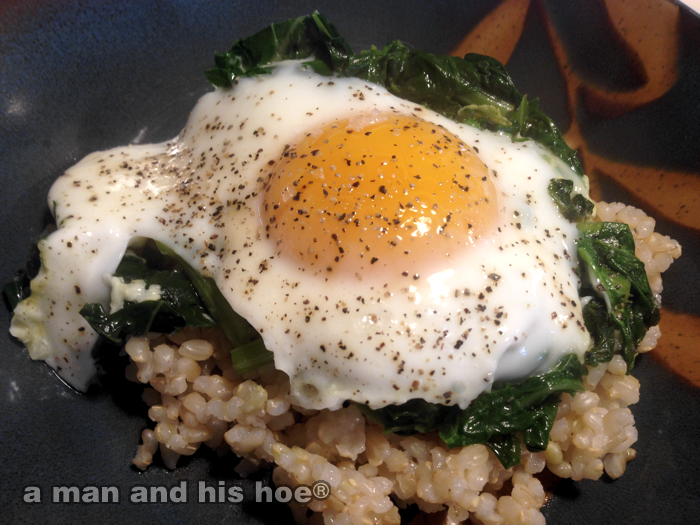When I think of waterfowl, images of ducks, geese, and herons come to mind. Chickens? Not. But, chickens go to where the bugs are, and so they spend a lot of time wading narrow streams, scratching in the mud for bugs to eat. They’ll also dig along the banks of the pond where they find plenty to eat.
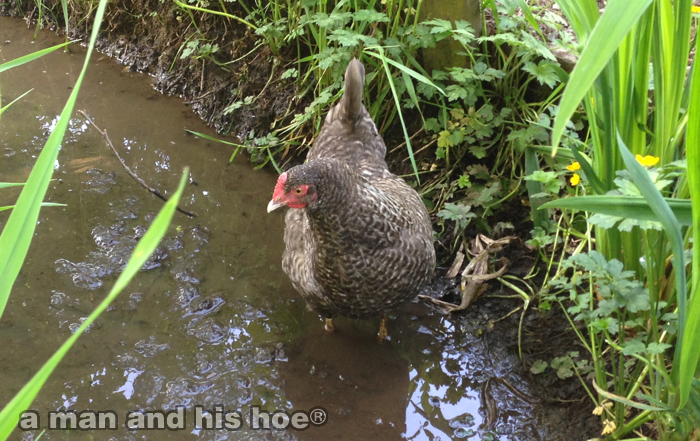
The thicker the brush along a stream the better. You can’t see them, but there are six chickens hidden under the brush.
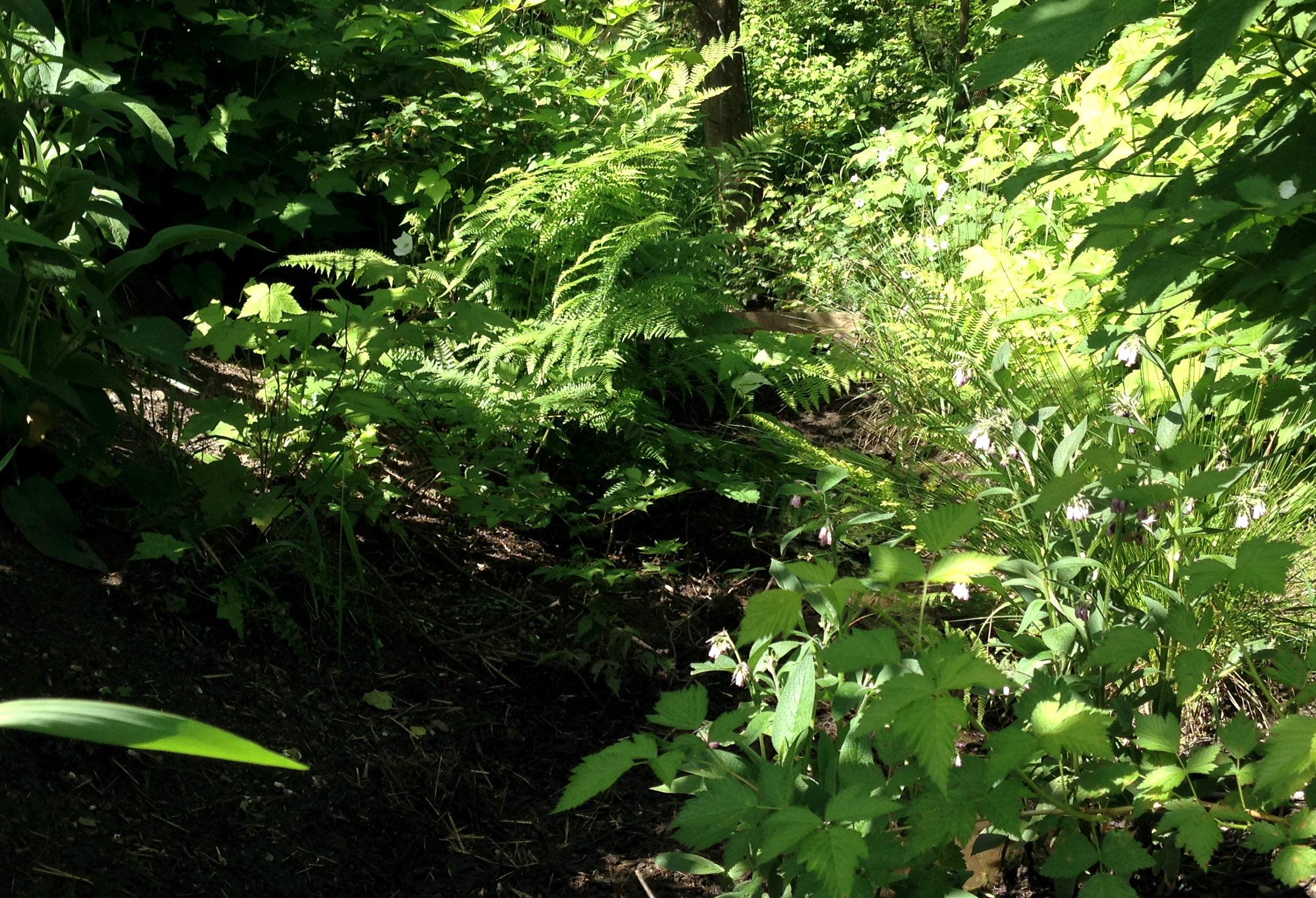
And a mother hen leads her chicks through the forest, followed by a young rooster looking for love.
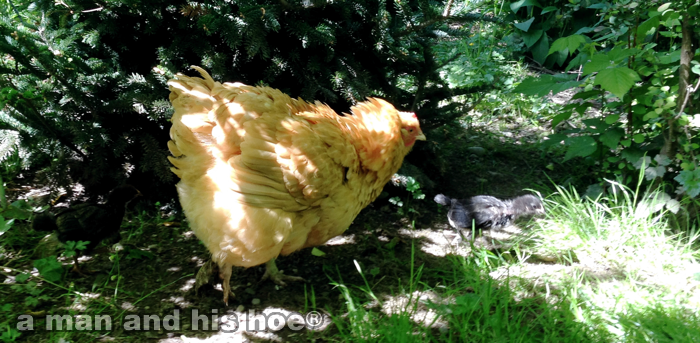
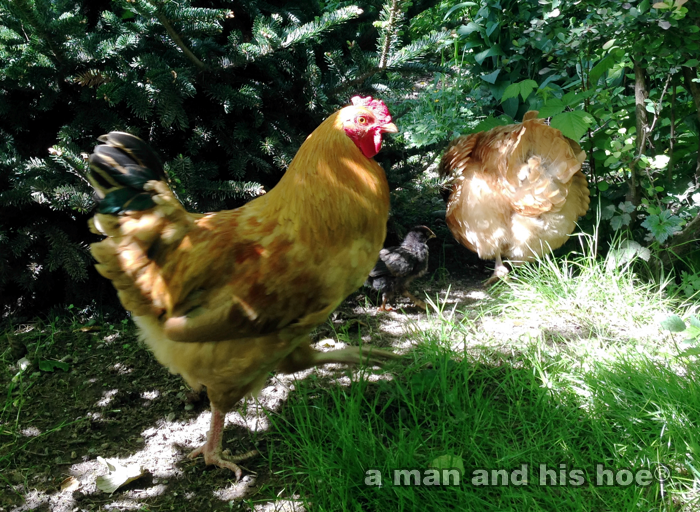
May Flowers
This is a month of flowers. The rhododendron are in full bloom. Lawn flowers are in bloom all over. And even though the dogwood is not blooming yet, the bracts have spread out and look like flowers themselves.




A Mother Hen’s Touch
These chicks are now three and four days old. They stay close to their mother all day long and watch her every move. They watch what she is eating. They watch where she drinks. They roll around in the dirt with her when she takes a dirt bath. When she goes for a walk they run alongside her.
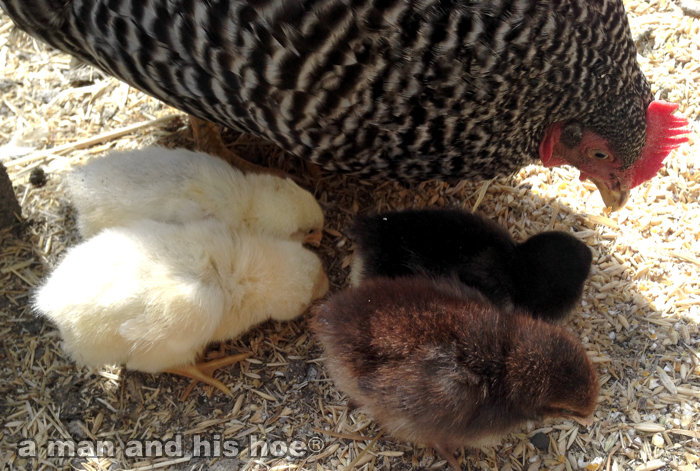
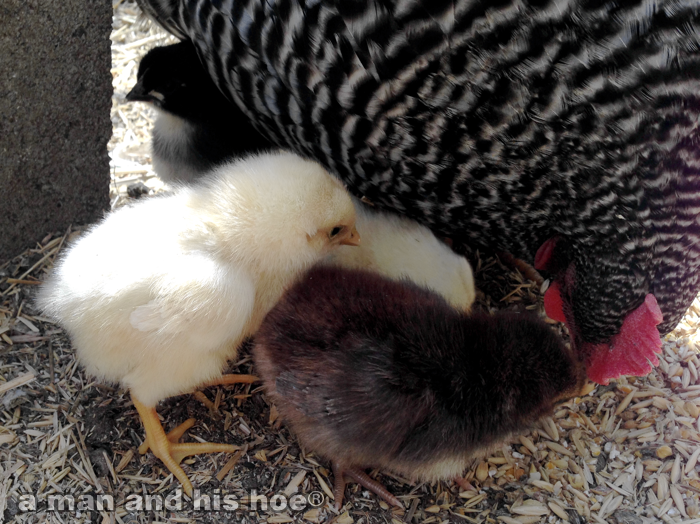
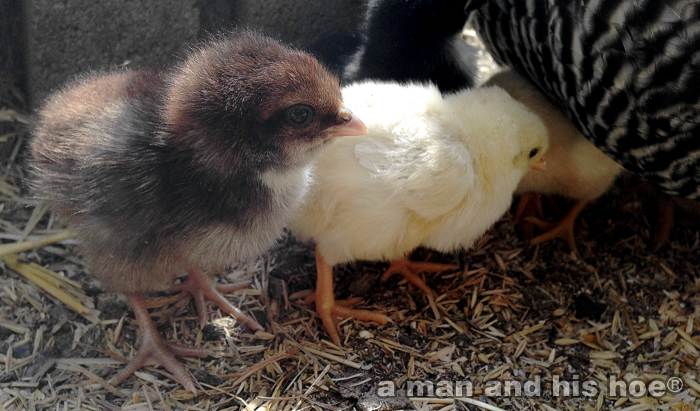

Two hundred years ago, this is how all chicks were raised. According to the National Chicken Council it wasn’t until the 1920s and 1930s that the modern chicken industry began to develop. Prior to that, chicken was a summer meat, something special for Sunday dinner.
Now, the chances of a chick hatching under a mother’s warm breast only happens in small backyard flocks. The chances of it happening in a commercial setting and for customers to purchase chicken raised this way is infinitesimal.
Paradise for Few – Hell for Many
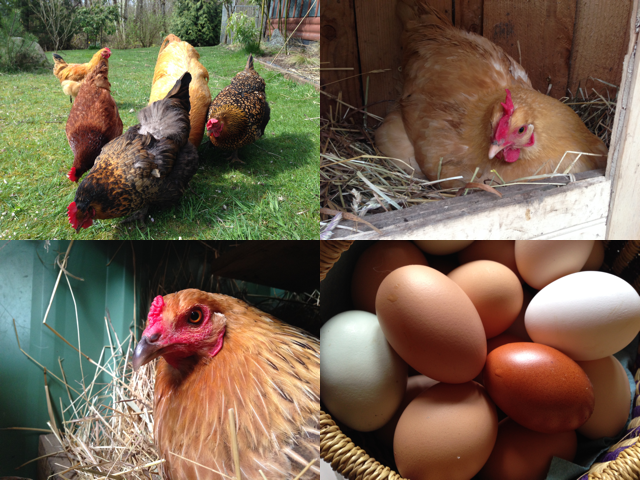
Looking at the peaceful pictures of roosters, hens and chicks at a man and his hoe®, it’s easy to get lulled into thinking that this is how many chickens spend their lives, happy and carefree. If you want spectacular eggs, this is what it takes.
But the truth of how eggs are really produced is not so idyllic. According to the American Egg Board, there are roughly 280,000,000 egg laying hens in the US and they lay 75,000,000,000 eggs each year, about 10% of the world egg production. Almost none of these egg laying hens have the a man and his hoe® experience. A tiny percentage of them have something approaching what the chickens here have. Sadly, according to NPR, 90% of egg laying hens in the US live out their lives in wire cages. Most of the rest spend their lives in very crowded, cage-free hen houses.
Today, I came across an article from Australia at Australian Broadcasting Corporation, reminding me again just how dreadful most egg production is. When you buy inexpensive eggs at Walmart, Costco, and most any supermarket, those eggs were most likely produced in a facility similar to that pictured below. In these battery farms, the hens spend their entire lives, four to six in a small wire cage. They never get to snuggle down in a soft, straw nest to lay an egg in peace. They never get to sun themselves under a blue sky. They never get to roll around in the dirt. They never get to do the things chickens want and need to do.
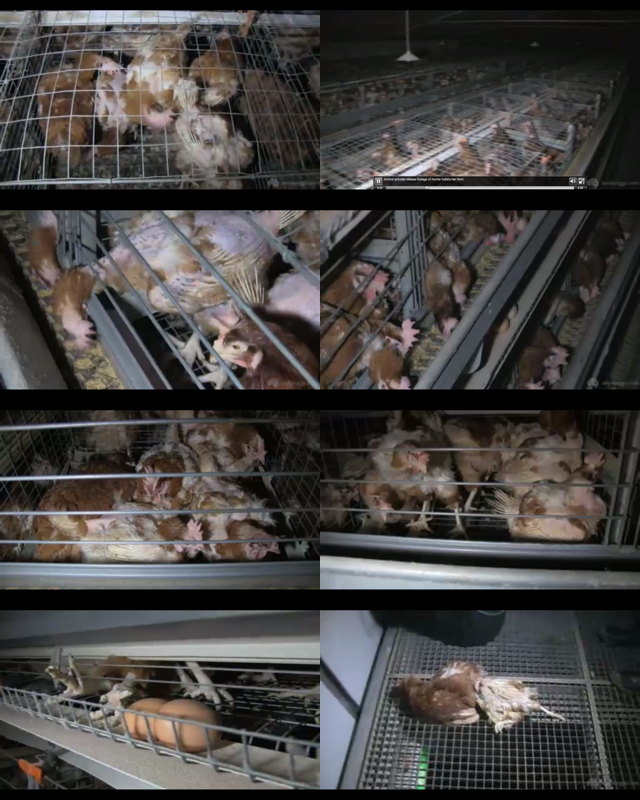
The result is billions of inexpensive eggs, but at an incredible cost to the hens. There is also a tremendous human cost. First, to the egg farmers who must face the unspeakable suffering they inflict on the tens of thousands of chickens under their care. It’s hard to imagine that farmers doing this do not incur an emotional cost.
Then there is the cost to everyone who eats these eggs. Can it possibly be healthy to eat eggs produced by hens who live in such dreadful condition? This type of egg production makes people believe that it is possible to produce good food cheaply, but when it comes to eggs, that is a lie. Creating eggs worthy of human consumption takes a lot of space and time. To create an egg worth putting in your mouth, a hen needs to spend her day outdoors, free to go wherever she wants to. She needs to be able to scratch in the dirt for earthworms and bugs. She needs to be able to roll around in the dirt. She needs to be able to soak in the sun. And she needs a clean, quiet nest to lay her great egg.
So when you buy your eggs, demand eggs that are worthy of you.
Chickens Hunting
We are out in the brush today, trying to get as close as we can to a fearless, predatory chicken, as it stalks prey. Parts of the pasture have just been mowed, leaving many insects exposed and vulnerable. For a chicken on the hunt, it’s hard to imagine better conditions to go hunting.

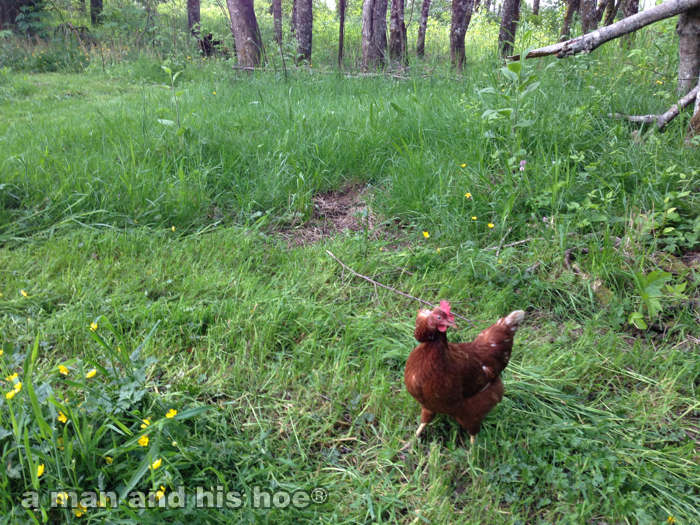
You can see the intensity in her eyes. With the grass and brush cut this low, insects don’t dare move. The slightest movement on their part, and they are doomed. Predatory chickens stab their prey with lightening speed. As far as an insect or field mouse is concerned, if a chicken can see them, their lives are over.
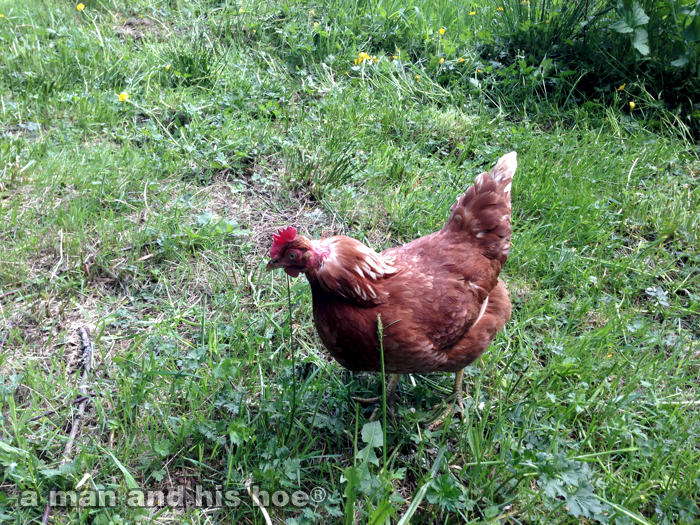

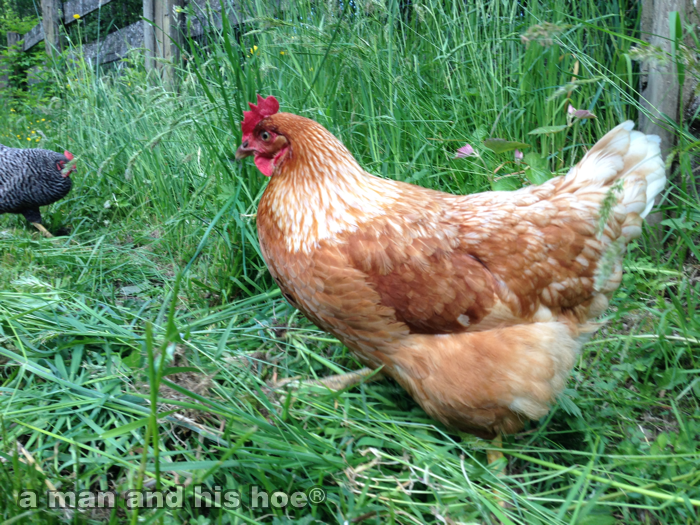
Another chicken has joined in the hunt. She’s noticed the other hen darting here and there so she knows the hunting is good. Soon more chickens will join in the hunt, like sharks drawn to chum.
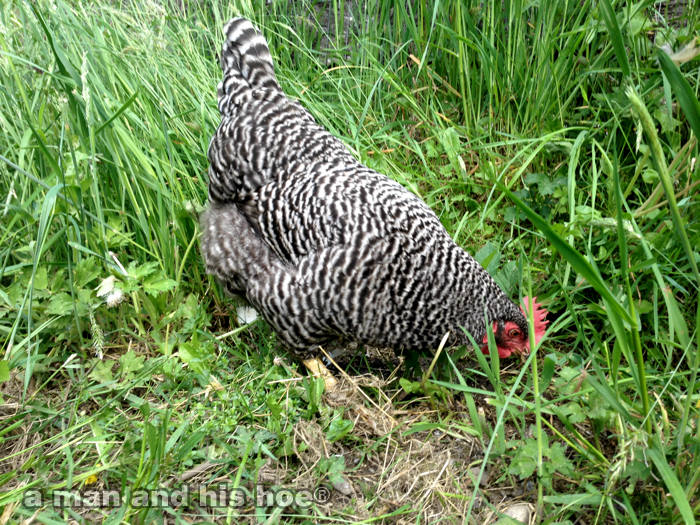

By the end of the day, the hunting chickens will have devoured thousands and thousands of insects. Those that escape the carnage will have nightmares for the rest of their lives.
Out for a Walk

Most people think of chickens as stupid, simple creatures. Yet, when you watch a mother hen with her chicks, she is constantly interacting with them. She carries on a conversation with them from morning until night. As she leads them from place to place in search of food, she is also watching for any danger. She is watching and listening to the other chickens, as well as looking up and around for anything that might harm her young.
This is what it looks like when a hen takes her two and three day old chicks out for a walk. Of the billions of chickens raised in the US each year, only an infinitesimal few are lucky enough to have a mother to take them out for walk.
What’s Growing Today – May 19, 2014
What’s growing today? Figs, squash, shallots, mustard greens, and of course chicks.


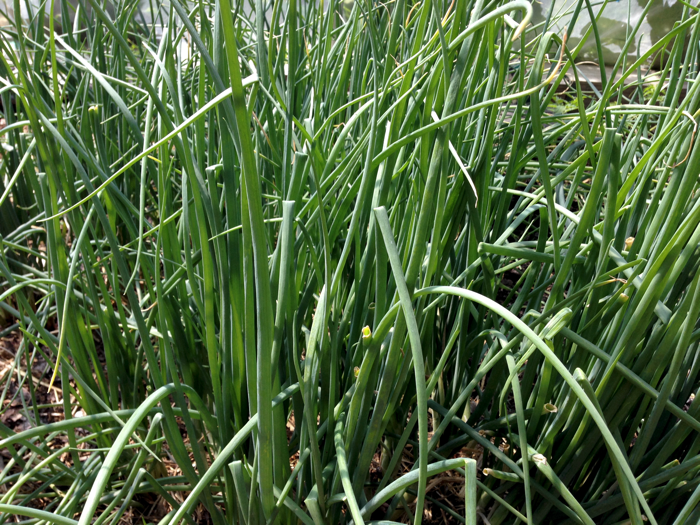
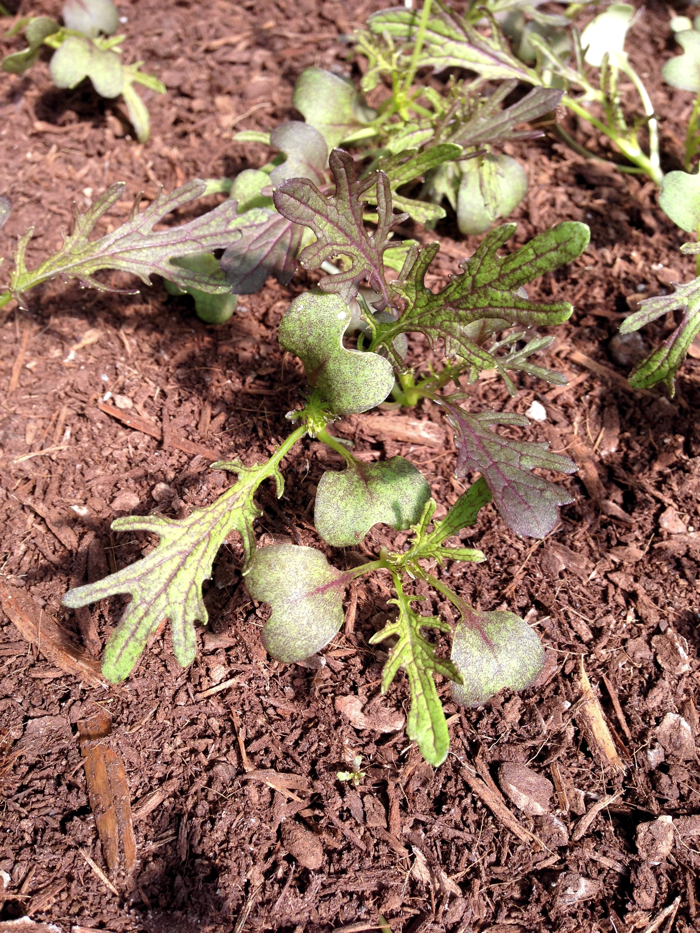
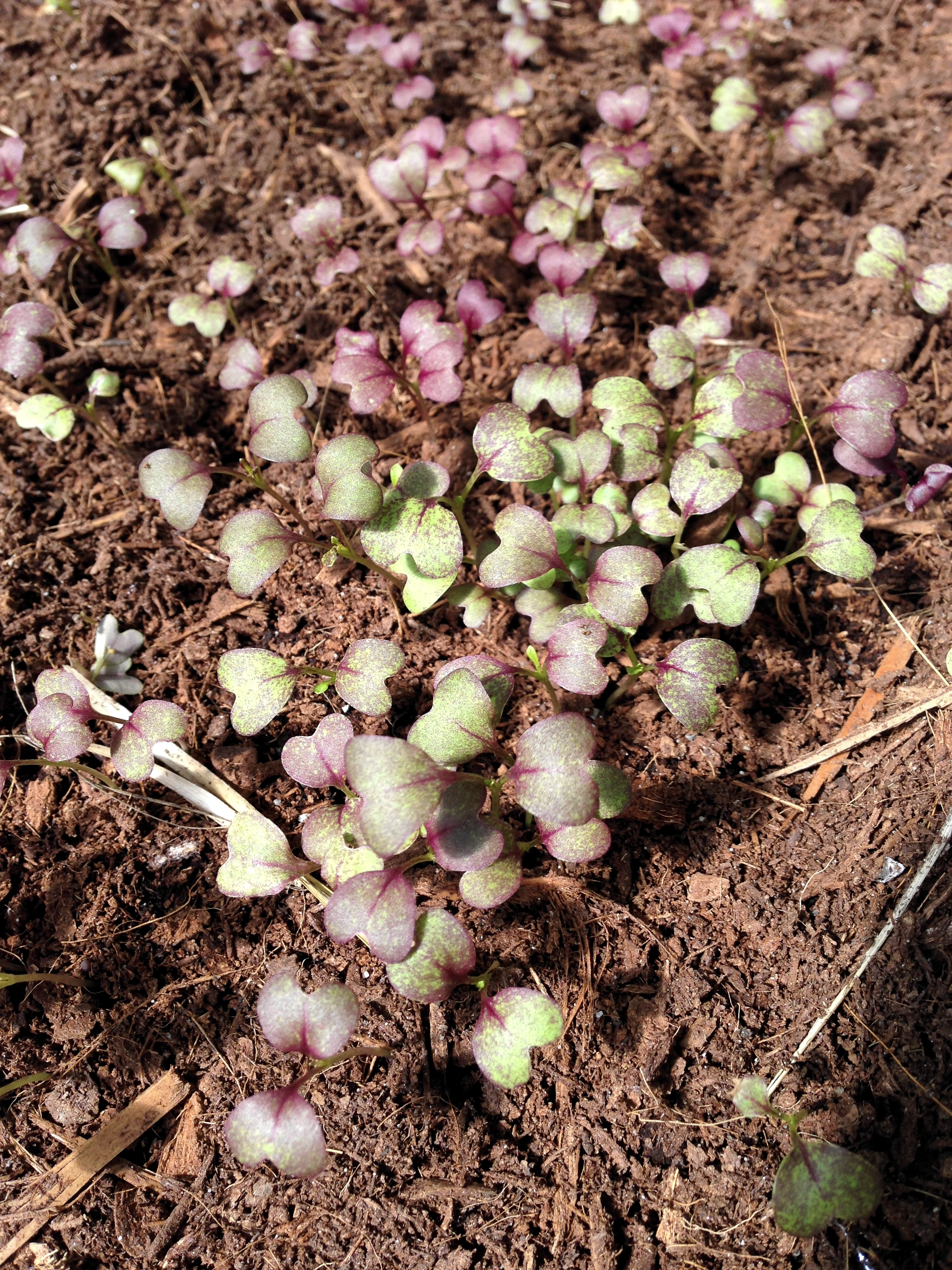
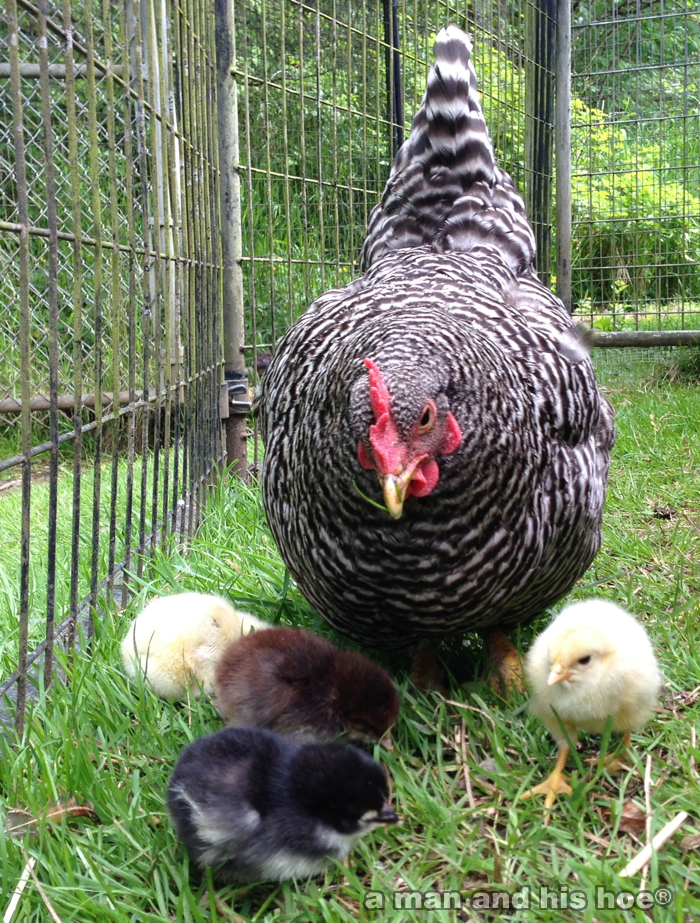
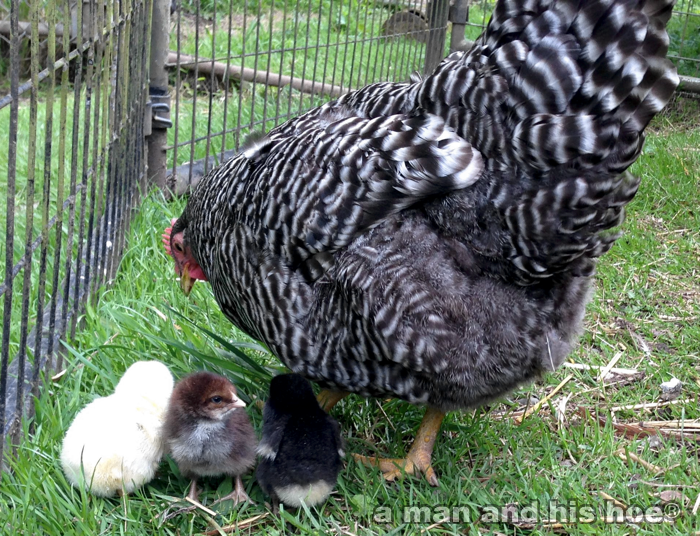
These chicks are just two and three days old and out on grass. This is only possible by having a mother. Farmers and individuals raising baby chicks without mothers have them under heat lamps and indoors to protect them. If they do put them out on pasture, they won’t do it until the chicks are two or three weeks old. By then, much of their childhood will be behind them and they will have missed out on a lot of outdoors fun.
Born Today
These are what one day old chicks look like. They started hatching yesterday and finished today. Their mother has them out of the nest to feed and drink.

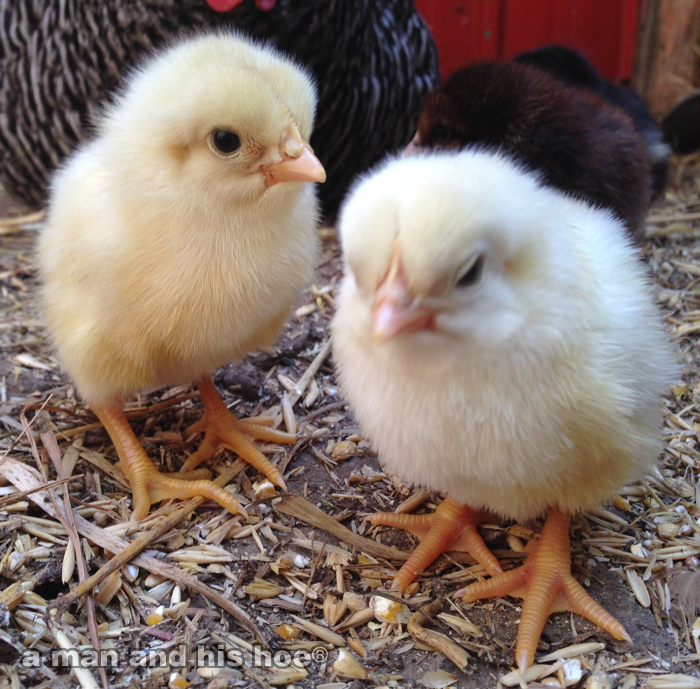
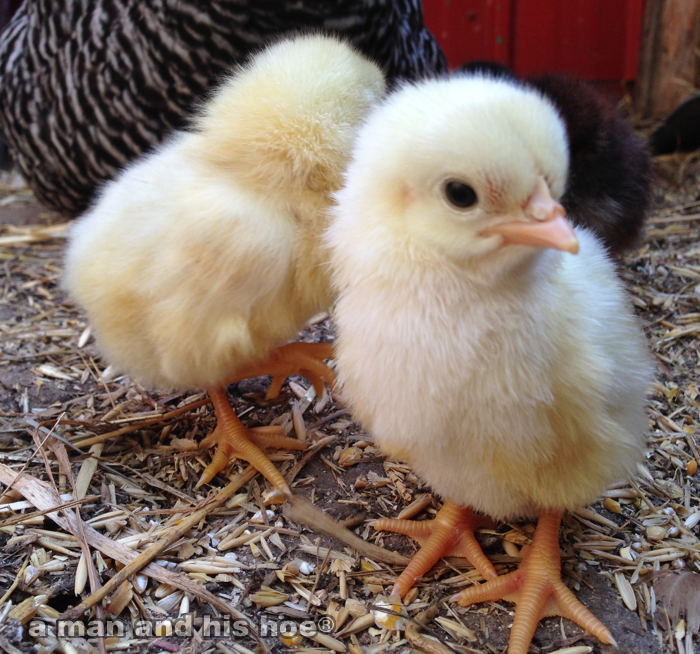
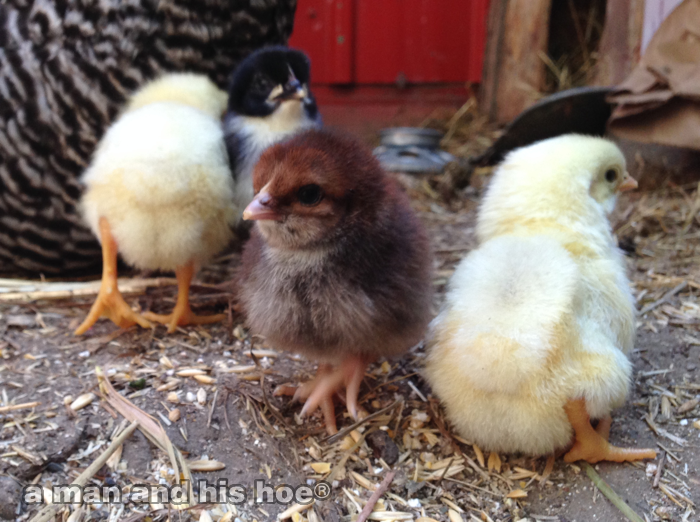
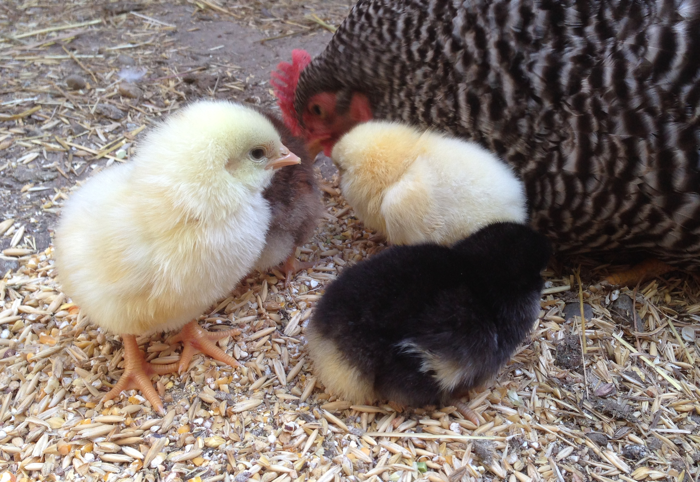
What Mothers Do
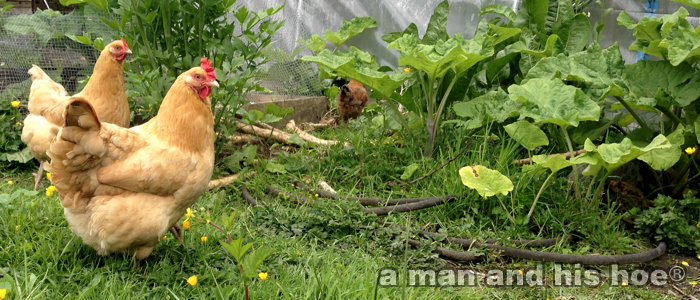
Mother hens are usually very diligent mothers. If they feel their chicks are threatened, the puff up into big balls of feathers. With outstretched wings and spread tail feathers, they puff up to twice their normal size, shielding their chicks and letting other chickens know that they mean business.
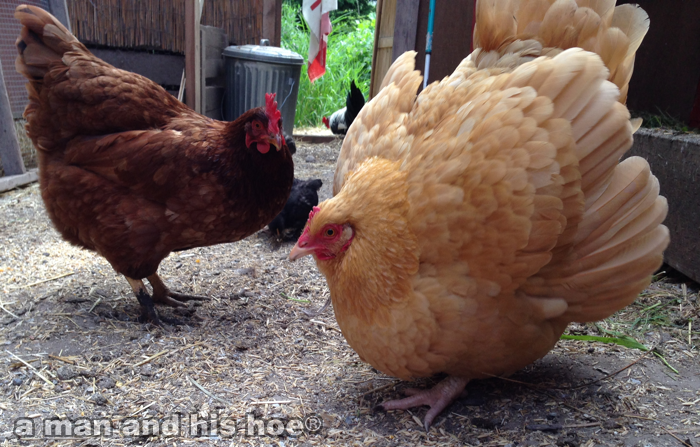
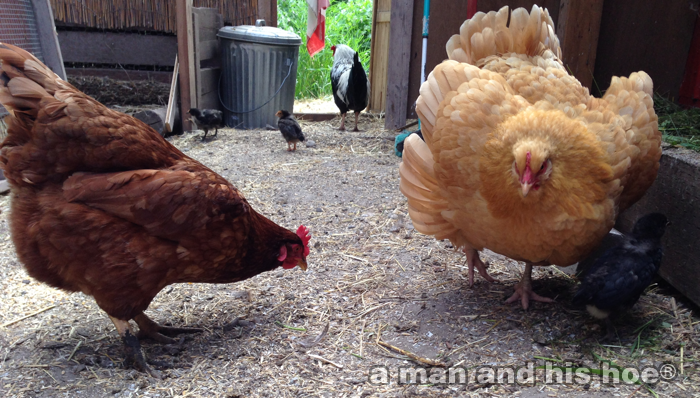
On the Board Today – May 18, 2014
On the board today – a simple lunch starting with freshly picked spring chrysanthemums (春菊-shyungiku) and kale, sautéed in home made butter made from raw cream.
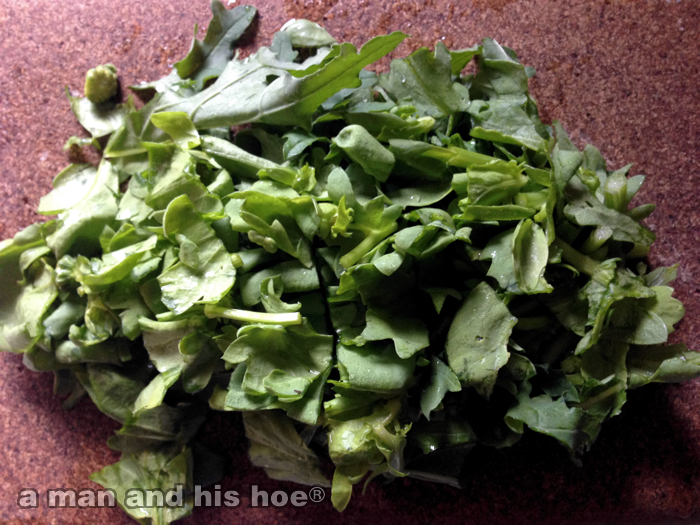

Followed by two eggs gathered within the past half hour, cracked into a bowl, laid on the sautéing greens, covered and allowed to gently firm to a soft egg.
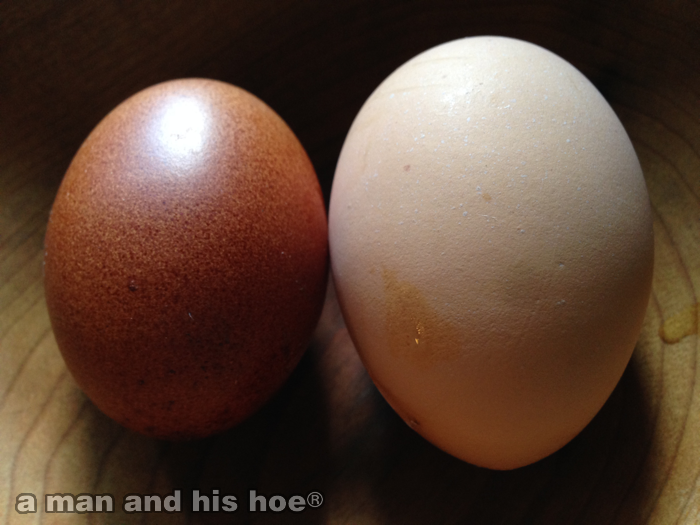
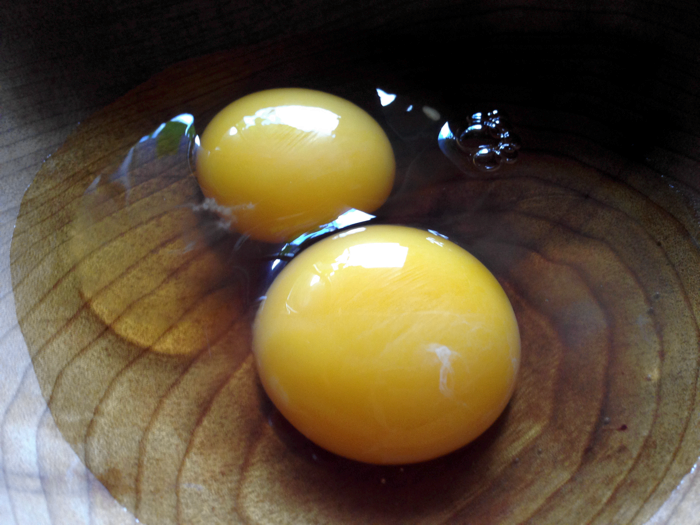
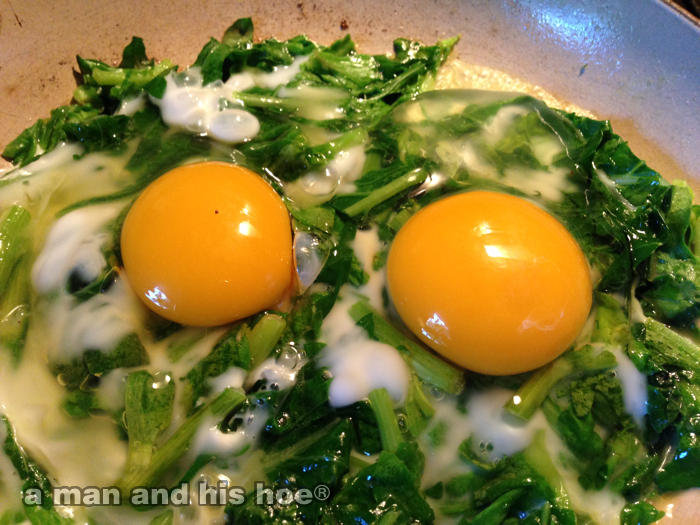
Flavored with a bit of sea salt from San Juan Island Sea Salt, and served on a bed of brown rice.

